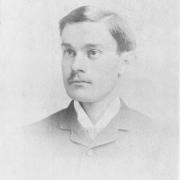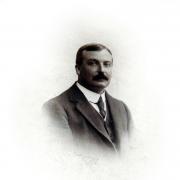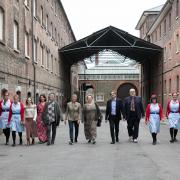In a year when we got an inkling of what living through a war means, we remember the 75th anniversary of the end of WWII | Words: Stephen Roberts - Photos: Manu Palomeque & courtesy of the Imperial War Museum

The dead included a little girl who’d been sent to the baker’s and whose body was found still clutching the bag of buns she’d bought. The 15 who died included seven children aged 12 or under, of which that little lass was one.
This was the aftermath in Sturry, a village north-east of Canterbury, which saw the greater part of its High Street wrecked by a parachute mine when the Luftwaffe came calling on 18 November 1941.
It was the most destructive war in human history. It lasted for six years and cost a conservative estimate of 60 million lives, the majority non-combatants.
It’s easy to understand why politicians were keen to avoid a Third World War once the Second World War had finally been put to bed. It’s also easy to understand why those who’d survived wanted to celebrate the end of that conflict. No doubt those revelries went on long into the night in Kent, as everywhere else.
Two years ago, we marked a century since the end of the Great War. With Remembrance Sunday (8 November) and Armistice Day (11 November) taking place this month, I’m turning the clock back to the 1939-45 war, which finally came to an end 75 years ago.

I want to consider not just what a shattering experience it was and therefore why we should never forget it, but also what effect it had on Kent. I began writing this in the middle of the Covid-19 epidemic, arguably the greatest crisis facing this country since the war.
I’ve sometimes wondered what living through a war must be like; it feels like we’re getting an inkling now.
There were two celebrations marking the end of the Second World War. VE (Victory in Europe) Day, on 8 May 1945, was the day people celebrated the Allies’ formal acceptance of Germany’s unconditional surrender on the previous day.
This year’s May Day holiday was moved to 8 May so we could celebrate again (and remember) on that 75th anniversary.
With an embargo imposed on gatherings as we struggled to comprehend, and cope with, our latest crisis, commemorations became low-key and more reflective, rather than celebratory. Perhaps it was no bad thing.

During those six years of war, just what happened in Kent? Was it business as usual in the Garden of England, the county of fruit-growing and oast houses, the High Weald and North Downs? It was anything but.
Kent was getting ready even before a bomb had dropped. In Ramsgate, a network of deep shelter tunnels opened in June 1939 to provide refuge for 60,000.
A boom was built from Sheerness to Essex to safeguard the Thames Estuary and its shipping against sub attack. Kent’s Martello Towers were brought back into use both as signalling stations and for coastal defence.
When the war in the west began in the spring of 1940, Operation Dynamo, the evacuation from Dunkirk, was masterminded from Dover’s Tunnels. Had this ended in catastrophe, it’s difficult to see how we could have carried on.
Ramsgate became the chief embarkation point for Operation Dynamo’s famed little ships and was the second-busiest port after Dover as Allied troops came home in thousands, more than 40,000 of them through Ramsgate.

‘Dunkirk Spirit’ or not, Churchill was right when he said: ‘Wars are not won by evacuations.’ Of course, much of the Battle of Britain, in the summer of 1940, was fought in the skies over Kent, with RAF Biggin Hill and RAF Manston among the heroic fighter stations that refused to buckle.
Had that battle been lost, then we would almost certainly have been invaded and Kent would have been right in the front line.
We sometimes overlook the real and present threat of a German invasion in 1940. Plans (Operation Sealion) had been drawn up. With the shortest Channel crossing (Dover-Calais), this part of the Kent coast became known as ‘Hellfire Corner’ for good reason.
RAF Hawkinge was the closest operational airfield to France, so it was also at the forefront during the Battle of Britain.
Hawkinge Cemetery, near the airfield, has 96 Second World War burials, mostly airmen, with about a quarter of those killed during the Battle or Britain. There are also 59 German graves. There are still pillboxes here, plus the Kent Battle of Britain Museum. RAF Kingsnorth was used by both the RAF and the United States Army Air Force.

After the Battle of Britain came the Blitz, which we tend to associate with London, and other major UK cities, but Kent was also hit hard. Ashford had almost 100 citizens killed in air raids, while nearly 30 died in Northfleet on a single day, 16 August 1941.
Canterbury experienced the worst of its 135 raids in 1942 as the Nazis launched the so-called Baedeker Raids on cities of historic importance with heritage to burn. The premise was to wreck not only these treasure troves but also British morale.
The worst day was 1 June 1942 when more than 40 died, 10,000 bombs fell on the city altogether and some 1,000 buildings were destroyed. A total of 119 civilians lost their lives in the borough.
The cathedral, that symbol of Anglican Christianity in the UK, was not too severely damaged, although its library was destroyed. British and Kentish morale, however, remained intact.
Dover’s proximity to Nazi-occupied France saw it get a pummelling from cross-Channel guns, with more than 200 townsfolk killed and 10,000 premises damaged.

The town had also prepared itself for the anticipated invasion that thankfully never came, a bristling ‘invitation to Britain’ of pillboxes, trenchworks and minefields.
Herne Bay had its pier breached in two places early in the war as another counter-invasion measure.
Ashford saw 94 of its citizens killed in its urban district while Tunbridge Wells, swollen with refugees from London, saw more than 3,800 buildings damaged by bombing; thankfully only 15 people were killed.
Swanscombe’s worst day of tragedy occurred on 10 November 1940 when a bomb fell on The Morning Star Inn just after 8pm and 27 died. On 30 July 1940 a dozen more were killed, while on 30 July 1944 a V-1 rocket landed on Taunton Road, killing another 13.
While these sound rather like depressing stats from a coronavirus briefing, then, as now, these were real people who left behind grieving relatives. Later in the war (1944-45) Kent was hit by 2,500 V-1 Doodlebugs.

Kent may have taken a pounding, but it also provided solace and support for the fightback. At Rochester, Shorts designed and manufactured the first four-engine bomber, the Stirling.
Reculver would see prototype test runs for the famous ‘bouncing bomb’, which was later deployed by 671 Squadron, The Dambusters, against the Ruhr Dams (May 1943).
At New Romney, there’s a piece of Mulberry Harbour (a temporary, portable harbour), embedded in a sandbank, still visible at low tide, just off the coast at Littlestone-on-Sea.
Further up the coast, PLUTO (Pipe Line Underwater Transportation of Oil) was used to pump oil across the Channel for use by the Allies after D-Day.
At Tonbridge, a PoW camp was built at the junction of Tudeley Lane and Pembury Road, on land belonging to Somerhill House. It held both German and Italian prisoners. After the war, the camp would be used as temporary housing for those bombed out of their homes during the Blitz.

Meanwhile at Swanley, both ‘Kettlewell’ and ‘Parkwood’ were used as military hospitals.
Returning to VE Day, what we should have been celebrating on 8 May was 75 years since the war in Europe ended, a war which began with Germany’s invasion of Poland (1 September 1939) and saw Britain declare war on Germany two days later.
Having survived the Dunkirk Evacuation and the Battle of Britain in 1940, our prospects were enhanced in 1941 when both Russia and the US joined the Allies, having been attacked by Germany and Japan, respectively.
D-Day (June 1944) saw the opening of the much-awaited Second Front, although it took almost another year before Germany surrendered and VE Day took wind.
As Churchill said to cheering crowds on VE Day: “God bless you all. This is your victory! It is the victory of the cause of freedom in every land. In all our long history we have never seen a greater day than this.
“Everyone, man or woman, has done their best. Everyone has tried. Neither the long years, nor the dangers, nor the fierce attacks of the enemy, have in any way weakened the unbending resolve of the British nation. God bless you all!”
Let’s continue to use that freedom wisely and respectfully. It was hard won.
Timeline
1939 – Germany invades Poland (1 Sep), Britain declares war on Germany (3 Sep)
1939 – Deep shelter tunnels open in Ramsgate
1940 – Evacuation from Dunkirk (May/Jun), Battle of Britain and start of the Blitz
1940 – 27 die in Swanscombe (10 Nov)
1941 – Germany attacks Russia (June) and Japan attacks the US (Dec)
1941 – Sturry’s High Street wrecked (15 die, 18 Nov). Northfleet attacked (16 Aug)
1942 – first major British victory of the war, second El Alamein (Oct/Nov)
1942 – Baedeker Raids on Canterbury
1943 – Russians defeat the Germans at Stalingrad on the Eastern Front
1943 – Bouncing bomb trialled at Reculver
1944 – D-Day (Jun), sees the Allies open the Second Front. Battle of Monte Cassino (Italy)
1944 – V-1 hits Swanscombe, killing 13 (30 Jul)
1945 – German surrender and VE Day (8 May). Japanese surrender and VJ Day (15 Aug)
1945 – VE-Day celebrations in Kent



























